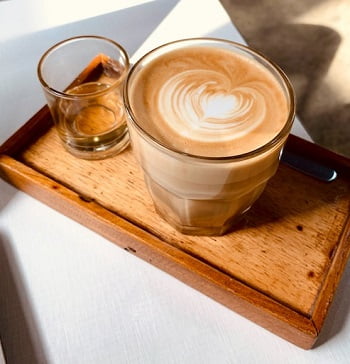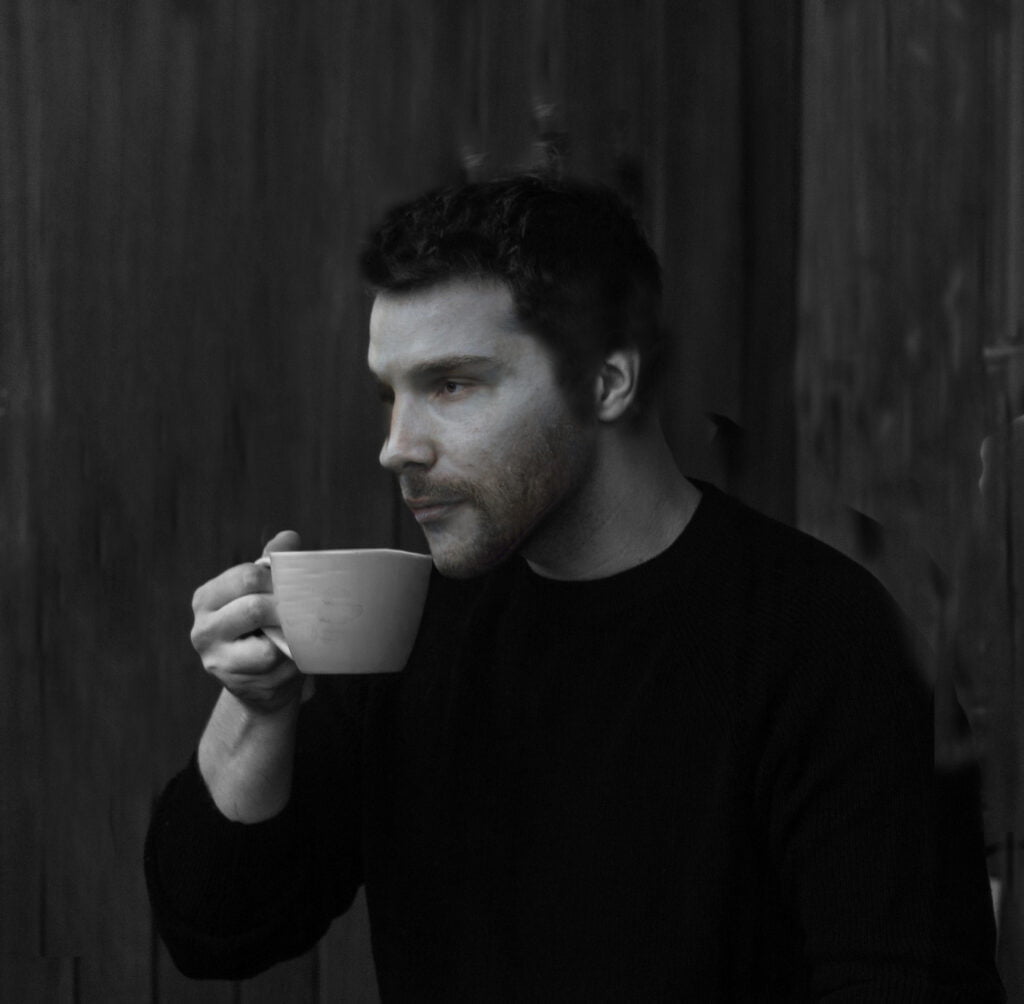Piccolo coffee also known as Piccolo Latte is a small strong coffee drink made by adding a little amount of milk to a Ristretto shot. It is an Australian specialty that has gained popularity in recent years. The name “piccolo” means “small” in Italian, and this drink is the perfect option for coffee lovers who want a strong espresso flavor in a smaller serving size.
Piccolo lattes are prepared with a smaller espresso shot, called a ristretto shot, which is around 20 mL. Its ratio is one part Espresso and two parts milk and therefore you can say Piccolo is just a small latte.
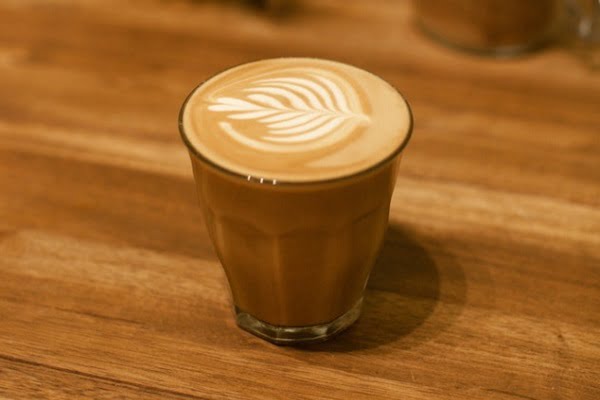
How to make Piccolo Latte
You can easily make a Piccolo Latte at your home by just slightly altering the ratios you use in traditional Latte.
What You Need
To make the Piccolo latte, you’ll need these items:
- Espresso machine
- Steaming Wand or Milk frother
- 7-9 grams of coffee grounds
- 2-3 oz Whole Milk
What are the best coffee beans for Piccolo Latte
Dark roasted beans are best for making a perfect Piccolo Latte. It is because the Piccolo Latte is made of Ristretto shot which is brewed for only 20 seconds and only dark roasted beans can extract flavors in such a little brewing time.
My personal favorite for a Piccolo Coffee or any Milk Based Espresso drink is Lavazza Super Crema. It is a blend of Arabica and Robusta beans that offers a strong flavor with roasted hazelnut and dark chocolate notes.
I will not recommend using a light roast coffee for making lattes. Milk doesn’t pair well with the fruity and floral notes in a light roast. Stick to medium and dark roasts to ensure a delicious and flavorful latte every time.
What is the Best milk for Piccolo Latte?
Whole milk is the best choice for a Piccolo Latte, as it provides a creamy texture and rich flavor. However, you can also use soy, almond, or oat milk if you are cutting calories from your diet.
Typically, a Piccolo has less froth than a traditional cappuccino or latte. The milk is heated to around 60-65 degrees Celsius (140-149 degrees Fahrenheit) and then carefully steamed to create a smooth, creamy texture that is not too thick or too thin.
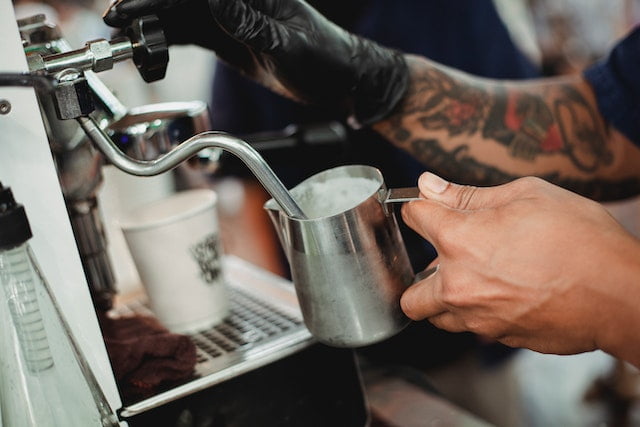
How many Shot of Espresso in a Piccolo Latte Drink
Piccolo Latte is traditionally made with a Ristretto shot (20 mL) instead of a standard Espresso shot, which is essentially a smaller cousin of Espresso.
When using a manual espresso machine, stop the shot a bit sooner than the standard espresso shot. You should stop the yield at 20 mL, which will take approximately 15 to 20 seconds.
Also Read: Espresso vs Ristretto
Step-by-step Recipe
1. Prepare a Ristretto Shot: Prepare a 20 mL Ristretto shot with an Espresso machine.
Use the same dose as a single shot of Espresso and Restrict the final yield to 20 mL instead of the standard 30 mL.
2. Prepare Milk: Pour 40-60 mL of cold milk into a steaming pitcher and start frothing. You want the milk to be velvety and smooth with small bubbles.
Typically, a Piccolo has less froth than a traditional cappuccino or latte.
3. Combine: Pour the steamed milk over freshly prepared Ristretto shot.
And there you have it, a quick and easy recipe for making your own Piccolo Latte at home. Serve it in a small glass as they do traditionally.
If you like your coffee sweet, add sugar or sweeteners. You can also add Hazelnut or Vanilla syrups to make your drink fancy.
What does a Piccolo latte taste like?
The Ristretto shot in a Piccolo Latte is usually stronger and more concentrated than in a traditional latte, which gives it a bold and intense coffee flavor that is not overpowered by the milk.
Piccolo Latte isn’t a very famous drink and you won’t find it easily in local coffee shops.
When I tried the Piccolo for the first time last year, I was pleasantly surprised by its small but mighty stature, boasting a perfect balance of milk flavors and caffeine content.
Piccolo Latte compared to other Milk-based drinks
Let’s compare Piccolo to other milk-based coffee drinks like Latte, Cappuccino, and Cortado to see how they differ.
Piccolo vs Latte
Despite having the word “latte” in its name, the Piccolo is not the same as a classic latte.
In general, a latte is served in a size of 8-12 ounces and is prepared using a double shot of espresso and 6-10 ounces of steamed milk. While, a Piccolo is substantially smaller, around 3-4 oz, and is prepared with smaller Ristretto shots.
Piccolo Coffee is significantly stronger than a traditional Latte as it is prepared with less milk and a more concentrated Ristretto shot.
Piccolo Latte vs Cappuccino
The Dry milk in Cappuccino and Steamed milk in Piccolo pair with Espresso in different ways resulting in distinct flavor profiles.
A Cappuccino is prepared with a double shot of espresso, and steamed milk, and topped with a thick foam layer. Cappuccino is a 6 oz drink with equal parts of Espresso, Steamed milk, and Foam.
The small amount of milk used in the Piccolo Coffee allows the espresso to take center stage, while the Cappuccino also has pronounced Espresso flavors because of the dry milk but is different from the Piccolo Latte.

Piccolo Latte vs Macchiato
The Piccolo Latte and Macchiato both have a small serving size and are made with a single shot of espresso. It’s the type of milk that makes the difference.
Macchiatos have only a small dollop of foamed milk on the top of the shot, while Piccolo Lattes typically have two ounces of steamed milk.
In terms of size, a macchiato is usually served in a small demitasse cup, while a piccolo is typically served in a small glass.
The Macchiato has a stronger and more intense coffee flavor than Piccolo with just a hint of sweetness from the small amount of milk foam.
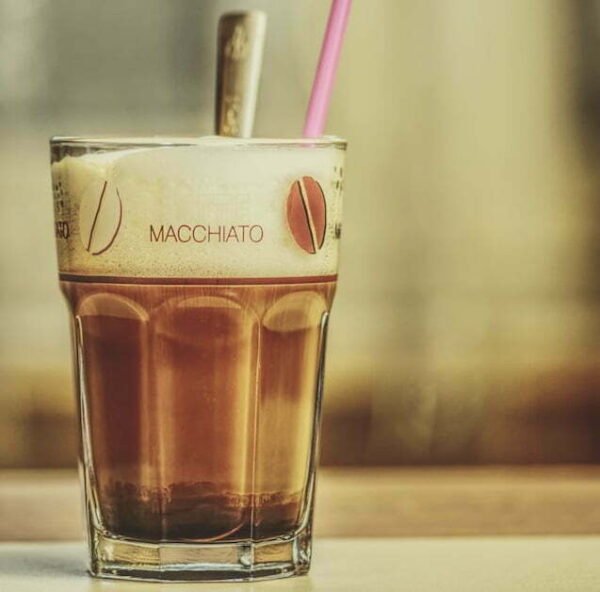
Piccolo Latte vs Cortado
Many people think Piccolo is the same as Cortado as they are both similar drinks with the same serving size of around 3-4 ounces.
A Cortado is typically made with a double shot of espresso and equal amounts of milk and coffee, while a Piccolo is made with a single ristretto shot, and the remaining space is taken up by milk.
Due to the high proportion of coffee, a cortado has a much stronger taste than a Piccolo Latte.
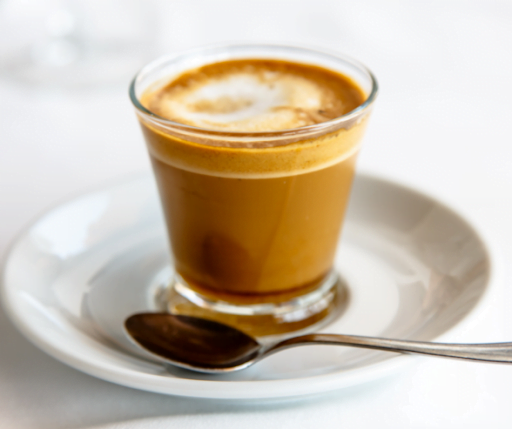
Final Thoughts
Piccolo Latte is a delicious and unique espresso-based coffee drink that offers a mix of strong coffee and creamy milk flavors in a small serving size.
Piccolo Latte is said to have originated in Australia during a time when coffee roasters were trying different coffee roasts for milk-based coffee drinks. The usual Latte drink was too heavy to test again and again, so they cut it into a short drink that is now renowned as Piccolo Coffee all over the world.
So, if you’re looking to try a new coffee drink in a smaller serving size, the Piccolo Latte is definitely worth a try.
You’ll love to read about other Espresso based drinks
Piccolo Latte Recipe
Equipment
- Espresso machine
- Milk Steamer
- Coffee grinder
Ingredients
- 20 mL Ristretto Shot
- 40 mL Milk
- Sugar or Sweeteners (Optional)
Instructions
- Prepare a 20 mL Ristretto shot with an Espresso machine.
- Steam 40 mL milk using a milk frother or steam wand while your espresso is brewing. You want the milk to be velvety and smooth with small bubbles.Whole Milk is preferred for preparing Piccolo Latte. But you can also use other types of milk as you like
- Pour the steamed milk over freshly prepared Ristretto shot.
- If you like your coffee sweet, add sugar or sweeteners. You can also add Hazelnut or Vanilla syrups to make your drink fancy.

